The Lean Startup Methodology was created by entrepreneur Eric Ries, in his book “The Lean Startup – How Today’s Entrepreneurs Use Continuous Innovation to Create Radically Successful Businesses”. Through this methodology, he sought to provide a framework for entrepreneurs looking to reduce the amount of time and money spent on launching a business. By utilizing the Lean Startup Method, entrepreneurs are able to quickly identify customer needs, develop products and services, and launch those products and services in a way that maximizes the chances of success.
In this post, we'll cover:
- 1 What is Lean Startup Methodology?
- 2 Benefits of Lean Startup Methodology
- 3 Understanding the Lean Startup Cycle
- 4 Steps for developing a lean startup
- 5 Benefits of rapid iteration for a startup
- 6 Measuring success with lean metrics for startups
- 7 The Critical Steps for Startup Validation
- 8 Understanding the value of customer validation
- 9 Utilizing the minimum viable product (MVP) for a Lean Startup
- 10 Establishing learning milestones
- 11 Building a culture of experimentation
- 12 Embracing failure and iterating quickly
- 13 How did Airbnb use the Lean Startup Method?
- 14 How did Dropbox use the Lean Startup Model?
- 15 Applying Lean Methodology to Different Business Sectors
- 16 Utilizing Lean Startup Method in Different Business Environments & Disciplines
- 17 Leveraging Lean Startup Methodology for Successful Team Management
- 18 Conclusion – Lean Startup Method
What is Lean Startup Methodology?
The Lean Startup Methodology is a popular approach to starting and scaling a business used by many successful entrepreneurs. The model is based on the idea that startups should focus on getting their product to market quickly, with the least amount of resources and the lowest level of risk.
Lean startup a process for developing and launching successful products and services rapidly. It involves rapid iteration and experimentation to quickly identify customer needs and develop a sustainable business model.
The methodology is based on the concept of “validated learning“, which is the process of using customer feedback to guide product development. As entrepreneurs use customer feedback to inform their product decisions, they are able to move quickly and make adjustments as needed, without wasting time and resources on features that customers may not need or want.
The Lean Startup Methodology also focuses on the idea of “iteration“, which is the process of continually refining a product or service in order to meet customer needs. This means that entrepreneurs are able to quickly make changes and improvements to their product or service based on customer feedback.
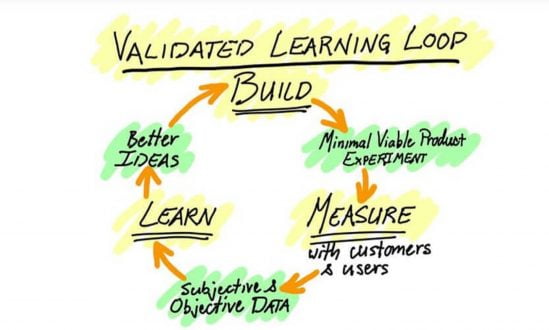
It encourages entrepreneurs to focus on the customer first, and to make decisions based on customer feedback. This customer-centric approach is key to the success of any startup, as customer feedback is essential in order to ensure that the product or service meets their needs.
This startup methodology has been proven to be successful for many entrepreneurs and is a popular approach for startups looking to launch their product quickly and effectively. By utilizing customer feedback and iteration, entrepreneurs are able to maximize the chances of success for their startups.
Benefits of Lean Startup Methodology
The Lean Startup Methodology is a business strategy that has gained immense popularity among entrepreneurs and businesses all over the world. This methodology focuses on creating value for customers through rapid experimentation, continuous learning, and iterative product development.
The Lean Startup Method is based on the idea that most startups fail because they build something that nobody wants. Thus, rather than spending time and resources to build a product, the Lean Startup Method stresses on quickly building a minimum viable product (MVP) to test the hypothesis with the customers and iterate it based on their feedback.
Validate your assumptions
The Lean Startup Model has numerous benefits for startups. One of the main benefits is that it allows startups to quickly test their assumptions and obtain feedback from customers. This helps startups to validate their product ideas and pivot according to customer preferences. The Lean Startup Method also helps startups to reduce the risk of failure by focusing on customer validation. This helps startups to avoid wasting time and resources on something that is not wanted by the customers.
Stay agile & flexible
Additionally, the Lean Startup Methodology also helps startups to stay agile and flexible in a rapidly changing business environment. This helps startups to quickly respond to changes in the market and adapt their product according to customer needs.
Save Time & Resources
The method also helps startups to save time and resources by eliminating non-essential activities and focusing on the ones that are important. Finally, the Lean Startup Model also helps startups to stay focused on their core mission and build a product that is desired by the customers.
The Lean Startup model provides numerous benefits for startups and helps them to quickly validate their product ideas and pivot according to customer preferences. This helps startups to reduce the risk of failure and stay agile and focused in a rapidly changing business environment. Thus, the Lean Startup Method is an essential tool for entrepreneurs and businesses to succeed in the digital age.
Understanding the Lean Startup Cycle
The Lean Startup Cycle is based on the idea that most startups fail because they build something that nobody wants. Thus, rather than spending time and resources to build a product, the Lean Startup Cycle stresses on quickly building a minimum viable product (MVP) to test the hypothesis with the customers and iterate it based on their feedback.
At StartupGuru though, we have innovated this model further and have rejected the effectiveness of MVP in this post-Covid19 pandemic market which is becoming more and more globally competitive. Our flagship incubation program emphasizes on the importance of a minimum sellable product (MSP) instead of an MVP.
Check out why we prefer (Minimum Sellable Products) MSPs over MVPs.
The Lean Startup Cycle consists of four main stages:
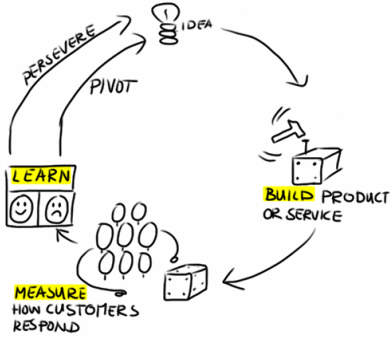
- Idea: This is the initial stage of the cycle where entrepreneurs come up with an idea and validate it with the customers through market research.
- Build: This is the second stage of the cycle where entrepreneurs build a minimum viable product (MVP) to test the concept with the customers.
- Measure: This step is where entrepreneurs measure the performance of the MVP and make adjustments according to customer feedback.
- Learn: This is where entrepreneurs learn from their mistakes and pivot their product according to customer feedback.
Note that it is called a cycle and for a reason. Founders would want to repeat the same process after the ‘Learn’ step. The Lean Startup Cycle is an effective tool for entrepreneurs and businesses to quickly validate their product ideas and pivot according to customer preferences. This helps startups to reduce the risk of failure and stay agile and focused in a rapidly changing business environment. Thus, understanding the Lean Startup Cycle is essential for entrepreneurs and businesses to succeed in the digital age.
Steps for developing a lean startup
A lean startup is an approach to developing a new business or product that focuses on rapid experimentation and iteration. This method helps entrepreneurs reduce risks and waste of resources (in terms of time, effort and money) associated with launching a startup, allowing them to save resources (time, efforts and money) while still quickly building a successful venture. To get started with your own lean startup, here are some essential steps.
1. Identify Your Target Market
The first step in developing a lean startup is to identify the target market you hope to serve. Determine the needs of your potential customers, the size of the market, and other factors that could affect their decision-making. You should also research competitors to determine how you can differentiate yourself from existing players in the industry.
2. Create a Minimum Viable Product (MVP)
Once you’ve identified your target market, it’s time to create an MVP—a basic version of your product or service that has just enough features to be useful but doesn’t include any unnecessary bells and whistles. This step allows you to test the waters without investing too much into the development process upfront.
3. Launch and Monitor
After you’ve created an MVP, launch it and collect feedback from users. Use this data to identify areas for improvement and develop more advanced versions of your product or service over time. Also pay attention to customer behavior such as retention rates, conversion rates, and other metrics that can help inform future decisions about your business model.
4. Test before Investing
Once you’ve launched your MVP and gathered initial feedback, it’s important to test out any new ideas before investing heavily in development costs or hiring additional staff. You can do this by running experiments such as A/B testing or split tests to see which versions of your product yield better results before committing resources long-term.
5. Iterate Constantly
Lastly, don’t forget that a lean startup is all about constant iteration and improvement based on user feedback. Be open-minded when it comes to revising your idea if necessary—after all, what works today may not work tomorrow! Make sure you stay on top of current trends in order to remain competitive in the long run.
These five steps will set you up for success as you begin developing a lean startup venture. Remember that there is no one-size-fits-all approach; each business requires its own unique strategy for achieving success!
As a matter of fact, founders who are part of StartupGuru Incubator follow our 16-week four stage lean program, that consists of Idea, Product, Launch and Funding stages.
Get our Guru mentorship on your startup to go from zero to one - learn more.
Benefits of rapid iteration for a startup
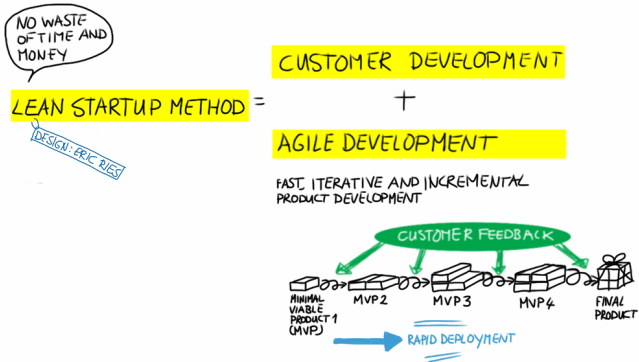
When it comes to launching a successful startup, one of the most important factors is rapid iteration. While startups are often seen as risky business ventures, there are many advantages to rapidly iterating on products and services. Rapid iteration can provide significant benefits for startups in terms of cost savings, improved customer satisfaction, and faster product release cycles. In this article, we’ll explore some of the major benefits associated with rapid iteration for a startup.
Cost Savings
Rapid iteration requires fewer resources and less time than traditional product development methods, which can result in significant cost savings. It also helps reduce costs associated with missed deadlines, failed projects, and sunken investments.
By making frequent changes to products and services, startups can avoid costly mistakes that may arise from developing an entire product from scratch without testing its viability first. This means that startups can save money by designing and refining their products in small steps rather than investing heavily upfront in a product that may not be accepted by consumers or the marketplace.
Additionally, since rapid iteration allows startups to quickly identify problems and make improvements accordingly, they can minimize their overhead costs by avoiding expensive repairs or upgrades down the line.
Improved Quality
With rapid iteration, teams can quickly identify and address any issues that arise during the development process. This ensures that the final product or service meets customer needs and expectations better than if it had been developed over a longer period of time.
Faster Time-to-Market
By streamlining the development process and reducing the number of steps required to launch a product or service, companies can get their offerings to market much faster than they would with more traditional approaches. This gives them an advantage when competing against other firms who may have similar offerings but took longer to release them due to their slower processes.
Rapid iteration can lead to shorter product release cycles which can give a startup an edge over competitors who rely on traditional development methods to launch their products. By releasing updates more frequently, startups are able to respond quickly to the changing demands of the market which gives them an advantage when it comes to staying ahead of the competition.
Shorter release cycles allow startups to test out new ideas quickly which helps them innovative and agile in their approach to product development and design.
Increased Customer Satisfaction
Customers expect fast results and continual improvement in the products and services they use, so rapid iteration helps ensure that companies meet these expectations by continuously improving their offerings based on customer feedback. This leads to happier customers who feel like they’re getting what they want from a company’s products or services in a timely manner.
By continuously improving products and services through such processes as user testing and feedback loops, startups can ensure that they’re releasing high-quality products that meet customers’ needs. This not only helps boost customer loyalty but also helps attract new customers who may have otherwise been turned off by poorly designed products or services.
Additionally, regularly releasing updated versions of a product or service can help keep existing customers engaged and excited about what’s coming next from your startup.
Overall, rapid iteration has many advantages for startups looking to achieve success in today’s competitive marketplace. Through cost savings, improved customer satisfaction, and shorter release cycles, startups are able to take advantage of these benefits while minimizing their risk exposure at the same time. So if you’re looking for ways to maximize your chances of success with your startup venture then considering rapid iteration should definitely be at the top of your list!
Measuring success with lean metrics for startups
Startup success is an elusive concept. Many startups make a lot of noise, only to fizzle out after a few months or years. In fact, according to a research paper by Startupgenome, 90% of the startups fail within its 1st year itself! To measure success and ensure sustainability, entrepreneurs must identify the right metrics to track. Lean metrics are key performance indicators that are closely aligned with the core goals of a startup and can provide critical insight into their progress.
Startup metrics vary depending upon the startup’s business model. What metrics can be applied to a subscription based model may not necessarily be the same for an e-commerce marketplace. However, there are some common metrics that can possibly be applicable to most startups, if not all.
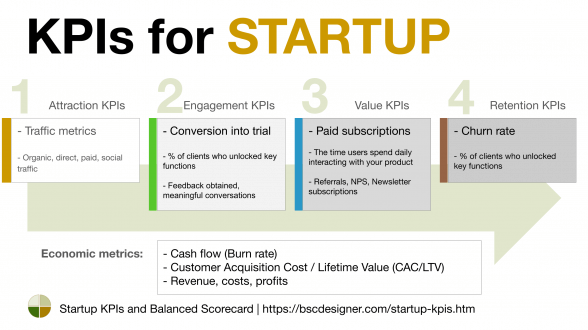
Customer Acquisition Cost
The most important and common metric for any startup is customer acquisition. How many customers have you acquired? How many people have signed up for your service? These questions can be answered by tracking customer acquisition cost (CAC), which measures how much it costs to acquire each new user. This metric should be monitored regularly to ensure that the company’s marketing and sales efforts are paying off.
Churn Rate
Another important lean metric is churn rate. Churn rate shows how many customers are leaving the company every month or quarter. It is an indication of customer satisfaction, and if it remains high, it indicates that something needs to change in order to keep customers engaged with the product or service.
Lifetime Value of Customer
A third critical lean metric is lifetime value (LTV). This measures how much revenue a customer generates over their lifetime with the company. LTV can provide valuable insights about upsell opportunities, pricing strategies, and customer loyalty efforts. By understanding LTV, businesses can optimize their operations and increase profits over time.
Cost Per Action
Startups should track cost per acquisition/action (CPA) to understand how efficiently they are spending their resources on marketing and advertising campaigns. CPA measures how much it costs to get someone to take a desired action – such as sign up for an email list or purchase a product – and can help determine which channels are delivering the highest returns on investment (ROI).
These are just a few examples of lean metrics that startups should track in order to measure success and ensure sustainability. Measuring these metrics regularly will enable startups to gain visibility into their progress and make informed decisions about where to invest time and resources in order to maximize growth potential.
Tip: Knowing the right user metrics based on your startup business model is the key to a successful investor meeting.
The Critical Steps for Startup Validation
Starting a business is an exciting endeavor but it can be risky if not done correctly. Before launching your startup, you should validate that there is a problem worth solving, that your solution meets the needs of customers, and that there is sufficient market demand to sustain growth. This process of validation involves five key steps – (1) Problem solution fit, (2) Product market fit, (3) Customer validation, (4) Founder problem fit, (5) Growth.
Problem Solution Fit
Problem solution fit focuses on understanding customer needs and validating whether or not your proposed solution meets those needs. It requires conducting customer research such as surveys and interviews to gain insights into customer pain points, assessing the competitive landscape to understand existing solutions offered by competitors, and prototyping/testing your own solution with potential customers. Successful startups have validated their problem-solution fit before moving on to the next step in the process.
Product Market Fit
Product market fit involves testing whether or not there’s enough demand for your proposed product or service in order for it to become profitable. This requires validating assumptions about customer segments, pricing models, features/functionality, distribution channels and market size/potential through experiments such as A/B testing or running campaigns across different platforms. If successful in finding product-market fit then you’re ready to launch!
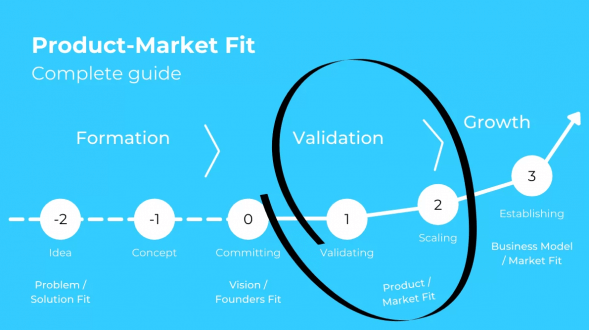
The third stage of startup validation is customer validation. This involves testing the demand for your product or service and understanding what customers need, want and value in order to succeed. It also requires validating that you can acquire and retain customers profitably.
Founder Problem Fit
Founder-Problem-Fit is a term used to describe the relationship between an entrepreneur and their problem statement. It tries to establish the founder’s connection to the problem as the more connected they are, the better chances the business would have of succeeding. Also called Founder-Startup-Fit, it refers to the idea that the founder must have the right skills, experience and attitude to be successful in launching and managing a startup.
Growth Validation
Growth validation for startups is a process of measuring metrics such as user engagement, customer acquisition costs and lifetime value to assess whether or not your product or service has potential for scaling up. It also involves validating assumptions about customer segments, pricing models, features/functionality, distribution channels and market size/potential.
Overall, making sure you have both problem solution fit and product market fit is critical for any startup venture as it will help determine its chances of success before costly investments are made. With these two steps taken care of you can focus on launching successfully! While Founder problem fit is an integral part of the overall process, customer validation at scale and growth validation are latter steps.
Understanding the value of customer validation
In the world of startups, customer validation is an essential factor that can make or break a company’s success; and it is at the heart of lean startup model. Customer validation is the process of determining whether a product or service meets the needs and expectations of its target market. This is done by gathering feedback from potential customers to help companies refine their offerings and ensure they are providing something that consumers actually want.
For any startup, having feedback from customers is invaluable for understanding what works and what doesn’t. By obtaining customer validation, startups can gain valuable insights into how their offering may be improved, as well as identify areas where there might be potential issues. It also provides a platform for customers to provide honest feedback about their experiences with the product or service. This can help guide startups in making necessary changes before launching a product or service to the public.
Gauge demand for your product/service
Customer validation allows a startup to gauge demand for its product or service before it goes to market. Startups can use this information to adjust their strategy accordingly and make sure they have enough resources in place to meet consumer needs and demands. With customer validation, startups can also determine if their pricing structure is competitive and appropriate for their target market.
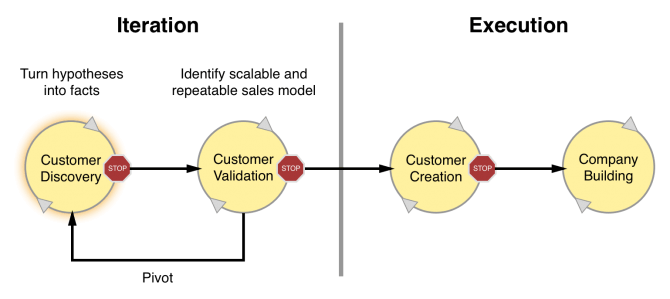
More exposure to the market
Customer validation also helps startups get more exposure in the marketplace which can lead to increased sales opportunities. By speaking directly with potential customers and getting insights into their preferences and buying habits, startups can create targeted marketing campaigns that are more likely to resonate with target audiences. This can result in greater brand recognition and higher long-term revenue potential.
Understanding the value of customer validation is key for any startup looking to succeed in today’s competitive landscape. With customer feedback, startups can develop better products and services that meet consumer demands while also gaining important insights into pricing structures and marketing strategies that will give them an edge over competitors.
Utilizing the minimum viable product (MVP) for a Lean Startup
Starting a business can be a daunting task, especially for entrepreneurs with limited resources. A Minimum Viable Product (MVP) is an effective way to get your business off the ground quickly and efficiently. An MVP is essentially a prototype of a product or service that includes only the most essential features. It allows you to test out an idea before investing heavily in its development. You will find MVP at the core of the overall lean startup model.
The first step in creating an MVP is to identify the core problem you’re trying to solve. Once you’ve identified the core problem, you can start developing an MVP by focusing on just one or two key features that will address that issue. This helps keep costs down while still allowing you to create something functional enough to test out your concept.
Test with your customers
Once your MVP is complete, it’s time to start testing it with customers. This can be done through beta testing, user surveys, focus groups, and other feedback-gathering techniques. This allows you to gain valuable insights from real customers about what they do and don’t like about your product or service. It also helps ensure that your MVP meets customer needs and expectations before launching into full production.

The main advantage of using an MVP is that it reduces the risk associated with launching a new product or service. By launching an MVP instead of a fully-fledged product or service, businesses are able to test out their ideas without spending too much money upfront. They can then use the data gathered from customer feedback to refine their concept and make improvements before releasing the final version of the product or service.
For startups, utilizing minimum viable products offers several advantages over traditional product development processes. It cuts down on costs since fewer resources are spent on development and testing up front.
It helps reduce time-to-market since there is no need for extensive research and development cycles before launch—instead, entrepreneurs can launch quickly once their MVP has been tested and refined based on customer feedback. Finally, it allows entrepreneurs to gain insight into customer preferences early on which helps them make more informed decisions about future developments and marketing strategies for their business.
Using an MVP is a great way for startups to get their business off the ground quickly and efficiently while still ensuring quality results with minimal risk involved. By leveraging this strategy, entrepreneurs can save time and money while gaining valuable insights into customer needs which will help them better position their product in the market going forward.
Establishing learning milestones
Establishing learning milestones in a lean validation model for startups is an important part of any startup’s success. The concept of “lean validation” has become increasingly popular among tech entrepreneurs as a way to test the viability of their ideas without spending too much money or resources upfront. This type of validation focuses on validating assumptions and hypotheses quickly and inexpensively using customer feedback, market research, and data analysis.
When it comes to setting up learning milestones, there are two key components to consider: speed and efficiency. Speed is critical because it enables startups to quickly identify problems and opportunities and make changes in order to be successful. Efficiency is important because this helps startups stay focused on their core goals while still maintaining flexibility in their development process.
To begin setting up learning milestones, start by establishing your baseline assumptions about the market you are entering into.
- Who is your the competition?
- What do you think the ideal customer profile looks like?
- What does your product offer that sets it apart from competitors?
Once you have these questions answered, you can then determine what data points need to be collected in order to conduct further analysis and validate each assumption.
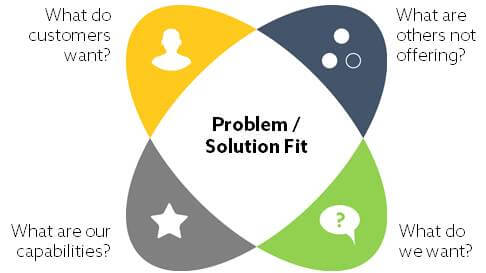
Once your baseline assumptions have been established, create a timeline for gathering customer feedback and conducting market research. This could include things like surveys, interviews, focus groups, user testing sessions, etc. The goal here is to get as much information as possible before making any major decisions or taking any significant actions related to product development or marketing. This helps minimize risk by ensuring that all decisions are based on solid evidence rather than hunches or guesswork.
Validate your hypothesis
After collecting initial data from customers and conducting research, use this information to develop hypotheses about how your product or service should perform in the marketplace. These hypotheses will form the basis of your experiments which need to be run in order to validate each hypothesis and track progress against the original goals set out at the beginning of the project.
Establish regular reviews of all results gathered throughout the experiment process so that any adjustments needed can be made in a timely manner. As more data is collected over time, revise earlier assumptions if necessary and adjust future experiments accordingly in order to ensure continued progress towards achieving overall success with your product or service launch.
By following these steps when establishing learning milestones in a lean startup model for startups, entrepreneurs can ensure they remain agile while also staying focused on their long-term objectives from the very beginning stages of product development. Allowing yourself enough room for experimentation and testing during this stage will help maximize chances for success once you reach full scale launch!
Building a culture of experimentation

Startup companies are constantly looking for ways to maximize their resources and gain a competitive advantage in the market. The Lean Startup Model is an effective way of achieving this goal, as it allows startups to quickly test their ideas and determine whether they are viable or not. However, to truly reap the benefits of Lean startup model, startups must create a culture of experimentation that encourages ongoing testing and iteration.
Communicate
The main challenge facing most startup founder(s) when it comes to creating a culture of experimentation is getting employees, co-founders and other stakeholders on board with the concept. One of the many reasons again, why we recommend not having a bigger team or hiring any employees at the idea stage.
Founder(s) must clearly communicate why experimentation is important and how it can help them achieve success. This means providing employees with education on the model and its advantages, along with tangible examples of how other successful companies have used experimentation to reach their goals. Once everyone understands the importance of experimentation, it’s essential that leadership sets an example by embracing testing and being open to failure.
In addition to making sure all employees understand the value of experimentation, it’s also important that teams have access to the right tools and resources so they can easily run tests. For example, startups should invest in user experience (UX) research platforms or hire a UX expert who can help them design experiments that accurately measure outcomes. Having access to analytics tools is also essential for tracking results over time so teams can make informed decisions about which experiments are working and which ones need improvement.
Feedback Loops
Startups should set up feedback loops so teams can get real-time feedback from customers throughout each experiment. This will allow them to make quick adjustments based on customer preferences instead of waiting until the end of an experiment before making changes. It also gives customers a voice in product development, which makes them feel more involved in the process and helps build trust between them and the company.
Creating a culture of experimentation within a startup requires commitment from both leadership and employees alike. But when done correctly, it can be extremely beneficial for businesses by helping them stay agile during times of uncertainty while allowing them to take measured risks in order to innovate faster than their competitors.
Embracing failure and iterating quickly
The Lean Startup Model has become increasingly popular among startups in recent years, with its emphasis on quick iteration and embracing failure. This model has allowed entrepreneurs to quickly identify problems and take corrective action, often resulting in success.
The key to successfully utilizing the Lean Startup Model is to embrace failure as part of the process. Startups should be willing to try out new ideas and strategies even if they expect them to fail. By not fearing failure, startups are emboldened to experiment and learn from their mistakes. This isn’t just about taking risks – it’s about learning from each step along the way.
The second key element of the Lean Startup Model is iterating quickly. Instead of spending months or even years fine-tuning a product or service, startups should focus on rapid iteration cycles. They should launch early versions of their product/service, test it with potential customers, and then use this feedback to make improvements before launching again. This enables startups to rapidly improve their products based on customer feedback without making costly mistakes that could derail their progress.
Startups must remember that customer validation is essential for success in the Lean Startup Model. Startups should seek out customers who can provide honest feedback on their products/services and make sure they listen to what those customers have to say. Customer feedback is one of the most important pieces of data available when it comes to improving a product or service, so it’s important for startups to prioritize getting this information as soon as possible.
In summary, the Lean Startup Model provides a great framework for startups looking to succeed in today’s competitive market. By embracing failure and iterating quickly based on customer feedback, startups can rapidly improve their products and services while minimizing risk and maximizing rewards.
How did Airbnb use the Lean Startup Method?
Airbnb is a household name today and is considered one of the most successful startups in recent history. But what many people don’t know is that Airbnb’s success is due in large part to the Lean Startup methodology.
The Lean Startup method is all about testing and validating ideas quickly and efficiently. Instead of spending months or even years building a product before launching it, startups using this lean model launch a minimum viable product (MVP) and get feedback from customers. They then use this feedback to iterate and improve the product.
Airbnb’s lean beginning
In the early days, Airbnb’s founders, Brian Chesky and Joe Gebbia, were struggling to pay rent in San Francisco. They came up with the idea of renting out air mattresses in their apartment during a big design conference. They created a simple website and launched their MVP, which they called “Air Bed & Breakfast.”
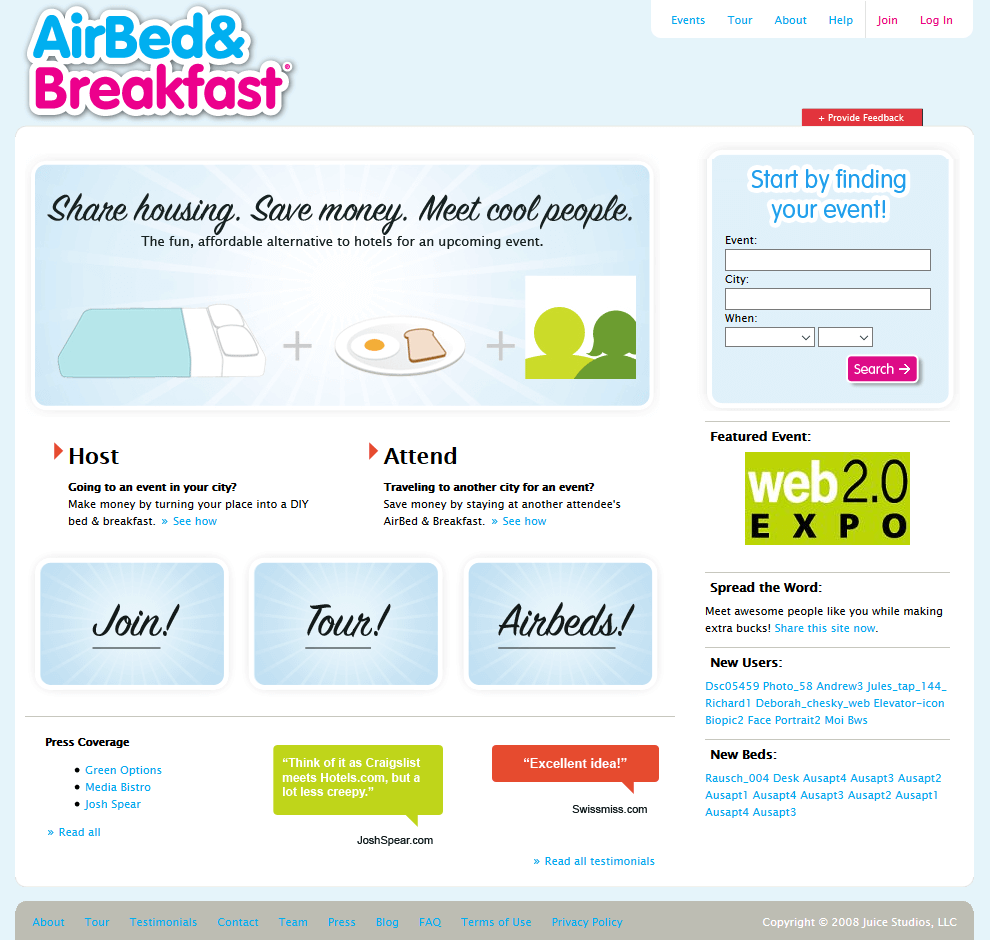
The initial response to the website was lackluster, with only a few bookings. But the founders didn’t give up. They took the feedback they received and made improvements to the website, making it more user-friendly and adding more features. They also started attending design conferences and networking with potential customers to get feedback and spread the word about their service.
Pivot
One of the key aspects of the Lean Startup method is the concept of the pivot. A pivot is a change in direction based on feedback from customers. Airbnb’s founders realized that their initial idea of renting out air mattresses was not scalable and wouldn’t make enough money to sustain the business. They pivoted and started focusing on renting out entire apartments and homes.
This pivot proved to be a game-changer for Airbnb. They continued to iterate and improve their product, adding features like professional photography and a secure payment system. They also used data to make informed decisions, analyzing metrics like conversion rates and user behavior.
By using the Lean Startup Methodology, Airbnb was able to achieve incredible success. Today, the company has over 7 million listings in over 220 countries and is valued at over $100 billion.
How did Dropbox use the Lean Startup Model?
Dropbox is a cloud storage company that is widely used by individuals and businesses around the world. However, what many people don’t know is that Dropbox’s success is largely due to the Lean Startup Methodology.
In the early days, Dropbox’s founder, Drew Houston, was frustrated with the limited options for file sharing and storage.
The challenge was that it was impossible to demonstrate this type of file sharing working software in a prototype form.
Despite facing significant technical hurdles and requiring a high reliability and availability online service component, the team behind the product faced an even bigger challenge: they couldn’t demonstrate the working software in a prototype form.
The Lean MVP
The fear of investing years into developing a product that no one wanted was too great. To mitigate this risk, Drew came up with an unexpectedly simple solution: he created a video walkthrough. The three-minute demonstration showcased the technology in action and was shared with a community of early adopters.
As Drew narrated the video, viewers could watch as his mouse manipulated his computer and synced various files. The in-jokes and humorous references hidden within the files were appreciated by the tech-savvy community. With this video, the team was able to garner interest and validate their product without creating a physical prototype.
He created a simple MVP, which was a video that explained the concept of Dropbox and how it worked. He posted this video on a forum for technology enthusiasts and received an overwhelming response. This is arguably one of the finest examples of a lean mvp.
With this positive response, Houston knew he was onto something. He created a landing page where people could sign up for the beta version of Dropbox. He then used the waiting list to gauge interest and to improve the product.

The Pivot
Just like Airbnb, Dropbox also learnt the benefits of an early pivot. A pivot is a change in direction based on feedback from customers. Dropbox’s founders realized that their initial idea of creating a simple file-sharing service wasn’t enough. They pivoted and started focusing on creating a seamless and easy-to-use cloud storage solution.
This pivot proved to be a game-changer for Dropbox. They continued to iterate and improve their product, adding features like file syncing and mobile apps. They also used data to make informed decisions, analyzing metrics like user engagement and retention.
By using the Lean Startup method, Dropbox was able to achieve incredible success. Today, the company has over 600 million registered users and is valued at over $8 billion.
Both Airbnb and Dropbox’s success is one of the many testaments to the power of the Lean Startup methodology. By launching an MVP, getting feedback from customers, and iterating quickly, these startups were able to create a product that customers loved and that was scalable. Aspiring entrepreneurs can learn a lot from Airbnb and Dropbox’s journey and apply the principles of the Lean Startup model to their own startups.
Applying Lean Methodology to Different Business Sectors
When it comes to running a startup, the Lean Methodology is one of the most widely used strategies for success. It involves analyzing processes and activities, identifying waste, and implementing systematic improvements that optimize workflow. This methodology has been applied in many different sectors with great success.
Manufacturing
Manufacturing is one sector that has seen substantial growth through the implementation of Lean Methodology. By utilizing this technique, manufacturers are able to streamline their operations by eliminating unnecessary steps or activities which can save both time and money. Additionally, they are able to increase production efficiency and improve customer satisfaction levels. In turn, companies have been able to significantly reduce costs while increasing profits.
Hospitality
The hospitality industry is also taking advantage of this strategy as well. Hotels, restaurants, and other such service-oriented businesses have found success in applying Lean Methodology by focusing on reducing waste in order to maximize efficiency within various departments including food preparation, housekeeping services and front desk operations. These changes result in cost savings for businesses as well as improved customer experience which ultimately drives more business into their establishments.
Healthcare
Lean Methodology has also been applied to healthcare organizations across the globe with considerable success. This is evident from the success of many HealthTech startups lately. By focusing on reducing wait times for patients as well as ensuring quality care at a lower cost, hospitals are reaping the benefits of this system with better patient outcomes at reduced costs for both patients and providers alike. Furthermore, it has enabled healthcare professionals to provide efficient care more quickly due to streamlined processes which improves patient satisfaction levels significantly.
SAAS Solutions
Digital Software-as-a-Service (SaaS) startups themselves are making use of Lean Methodology in order to ensure their own success from early stages of development all the way up until they become fully established entities within their respective industries.
SaaS Startups often focus on rapid prototyping and experimentation in order to identify potential areas where they can make improvements without investing too much time or money into any particular project or product offering before testing whether there is a market demand or not first-hand; thereby allowing them to survive longer without burning through resources quickly.
Some more sectors where lean methodology has been successful are:
Education
EdTech: Lean Methodology can be applied to educational institutions in order to improve the quality of instruction and reduce operational costs. By focusing on eliminating waste and increasing efficiency, schools are able to optimize resources for better student outcomes.
Retail
Retailers can use this system to identify areas where they can reduce costs while improving customer service levels. Streamlining processes such as inventory management, product selection, and checkout times are all ways that retailers have been able to save money while providing more value to their customers.
Logistics
The logistics sector has seen great success with the implementation of Lean Methodology as well, by optimizing routes and minimizing paperwork it has enabled companies within this sector to operate more efficiently while reducing costs significantly.
Financial Services
FinTech: Applying Lean Methodology within various financial operations such as banking and investment services allows these organizations to become more agile while also reducing overhead expenses which improves overall profitability significantly.
As you can see, it is clear that no matter what sector an organization works within; Lean Methodology provides a valuable toolset that can be implemented in order to achieve maximum efficiency while minimizing waste along the way – resulting in increased profitability for those who take advantage of its full potential!
Utilizing Lean Startup Method in Different Business Environments & Disciplines
The Lean Startup Methodology has become a popular and successful approach to building businesses, especially for startups. It is a framework that focuses on quickly delivering customer value through experimentation and iteration. Companies use this methodology to develop products rapidly, test them with customers, and iterate quickly based on feedback.
In addition to being an effective approach for startups, the Lean Startup Method can also be applied in different business environments.
Product Development
For example, larger enterprise organizations can benefit from the principles of Lean by using it as part of their product development process. This allows them to develop products more efficiently while still focusing on delivering value to customers quickly. Additionally, using Lean can help large companies compete with smaller startups that may have a head start in developing innovative solutions.
Sales & Marketing
Another area where the Lean Startup Method can be beneficial is sales or marketing teams. Many organizations struggle to understand how customers want their product or service delivered and what they should prioritize when it comes to offering features or services. By embracing the principles of experimentation and rapid iteration, sales and marketing teams can get direct feedback from customers about what works best for them which can significantly improve their success rates over time.
New Projects or Initiatives
Businesses in all industries have begun applying lean principles when launching new projects or initiatives within the organization. By breaking projects down into smaller chunks and testing each one before committing fully to implementation, companies are able to minimize risk while reducing costs associated with failed initiatives or wasted resources due to incorrect assumptions about customer needs or wants.
Overall, the Lean Startup Model is an incredibly powerful tool that has proven successful for many types of businesses across all industries. With its focus on rapid experimentation and iteration it provides a great way for companies of any size to deliver customer value faster while minimizing risk associated with new products, services or initiatives.
Leveraging Lean Startup Methodology for Successful Team Management
Now that you understand the basics of Lean Startup Methodology, it is time to consider how it can be used in the context of successful team management. By leveraging this methodology, startups can maximize their chances of success by reducing waste and focusing on what truly matters: the customer.
Start Small
One key way to leverage Lean Startup Model for successful team management is to start with small teams and gradually add members as needed. This ensures that everyone has a clear understanding of their role and responsibilities from the beginning, while also providing flexibility for changes or additions as your startup grows. Additionally, having a smaller team helps reduce overhead costs and allows for more rapid decision-making, minimizing bureaucracy and allowing for faster progress towards goals.
Customer Feedback
Another important component of Lean Startup Method is its focus on customer feedback. By continually engaging with customers through surveys, interviews, or other methods of gathering data, startups can gain valuable insights into how they are doing and what needs improvement. Team members should be encouraged to take an active role in gathering customer feedback so that they can stay up-to-date with customer needs and preferences. This will ensure that decisions are based on facts rather than assumptions which may not reflect reality.
Lean Startup Method emphasizes continuous learning and experimentation as part of the product development process. Teams should approach each project as an opportunity for learning new skills or finding innovative solutions to problems instead of simply executing tasks without any consideration for growth or improvement opportunities. This mentality encourages creativity among team members while also giving them the tools needed to adapt quickly when faced with unexpected challenges down the line.
By leveraging these principles associated with Lean Startup Methodology, startups are able to create teams capable of making informed decisions quickly while still leaving room for innovation and growth. For any startup looking to maximize their chances of success in today’s competitive marketplace, implementing these strategies is essential!
Conclusion – Lean Startup Method
The Lean Startup Methodology has become an increasingly popular way for businesses to optimize their processes and increase efficiency. It is a process of creating and launching products or services with the aim of gaining customer feedback and making any necessary improvements in order to maximize the chances of success. The key element of this methodology is to focus on customer needs and to quickly create, test, and iterate prototypes until they are refined into successful products.
The conclusion that can be drawn from the application of Lean Startup Method is that it helps businesses save time, money, and resources by allowing them to identify what works best for their customers faster than traditional methods. Additionally, it allows businesses to work smarter by using data-driven decisions rather than relying solely on intuition or guesswork. Finally, it encourages experimentation which can lead to improved innovation within the company as well as better customer satisfaction ratings.
In conclusion, the Lean Startup Methodology provides a practical approach for businesses looking to maximize their chances of success when launching new products or services. By focusing on customer needs, testing ideas quickly and iterating based on feedback received from customers, businesses can gain valuable insight into what works best for them while avoiding costly mistakes. Ultimately, this approach can help businesses reduce costs while increasing profitability in both short-term and long-term scenarios.
If you are an early stage, pre-seed startup founder looking for expert mentorship in applying lean methodology for your startup, you may want to check out our incubation program and apply if you find it a fit.

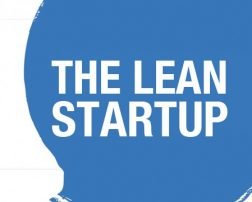


Thank you for sharing great information.